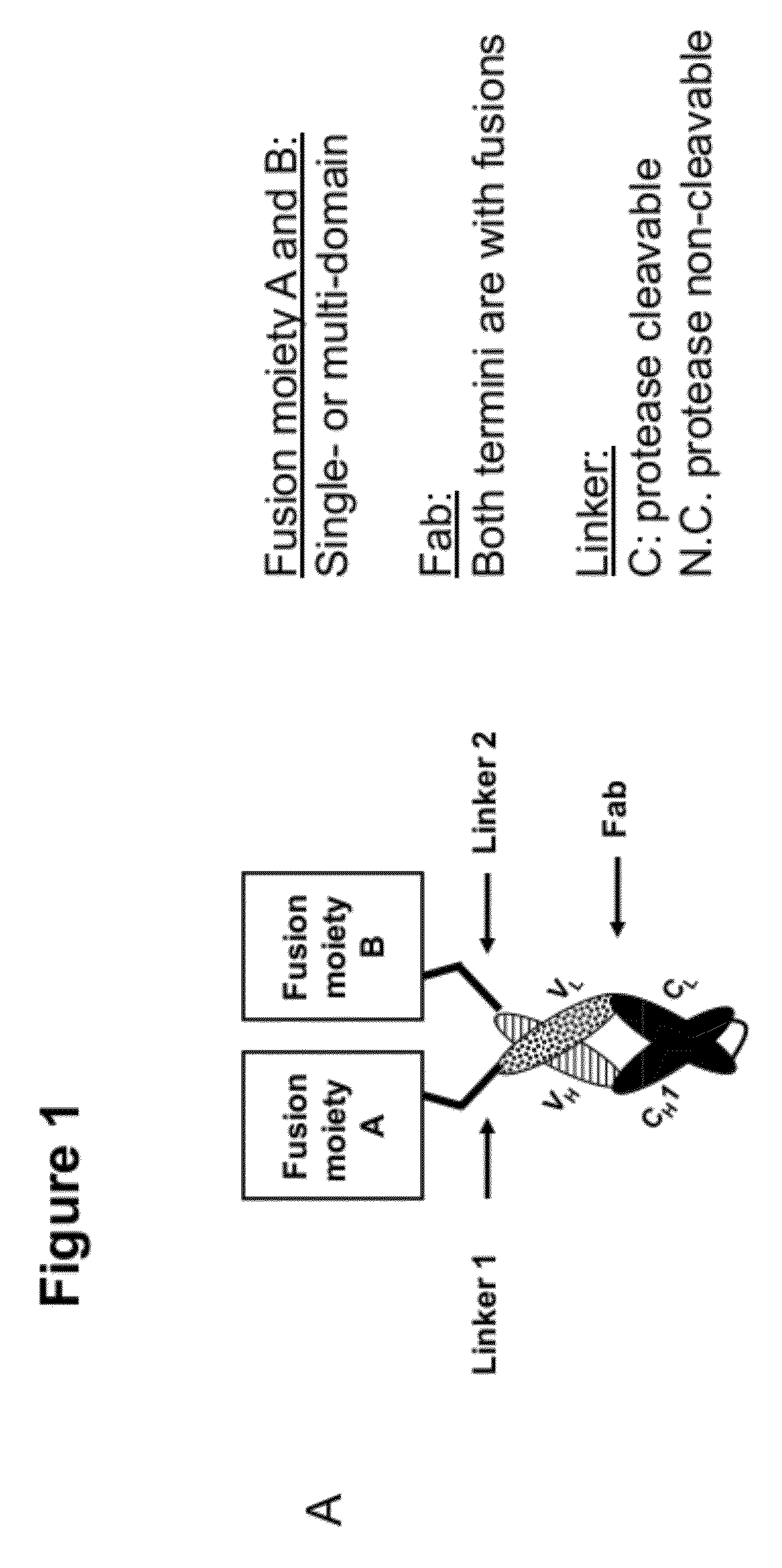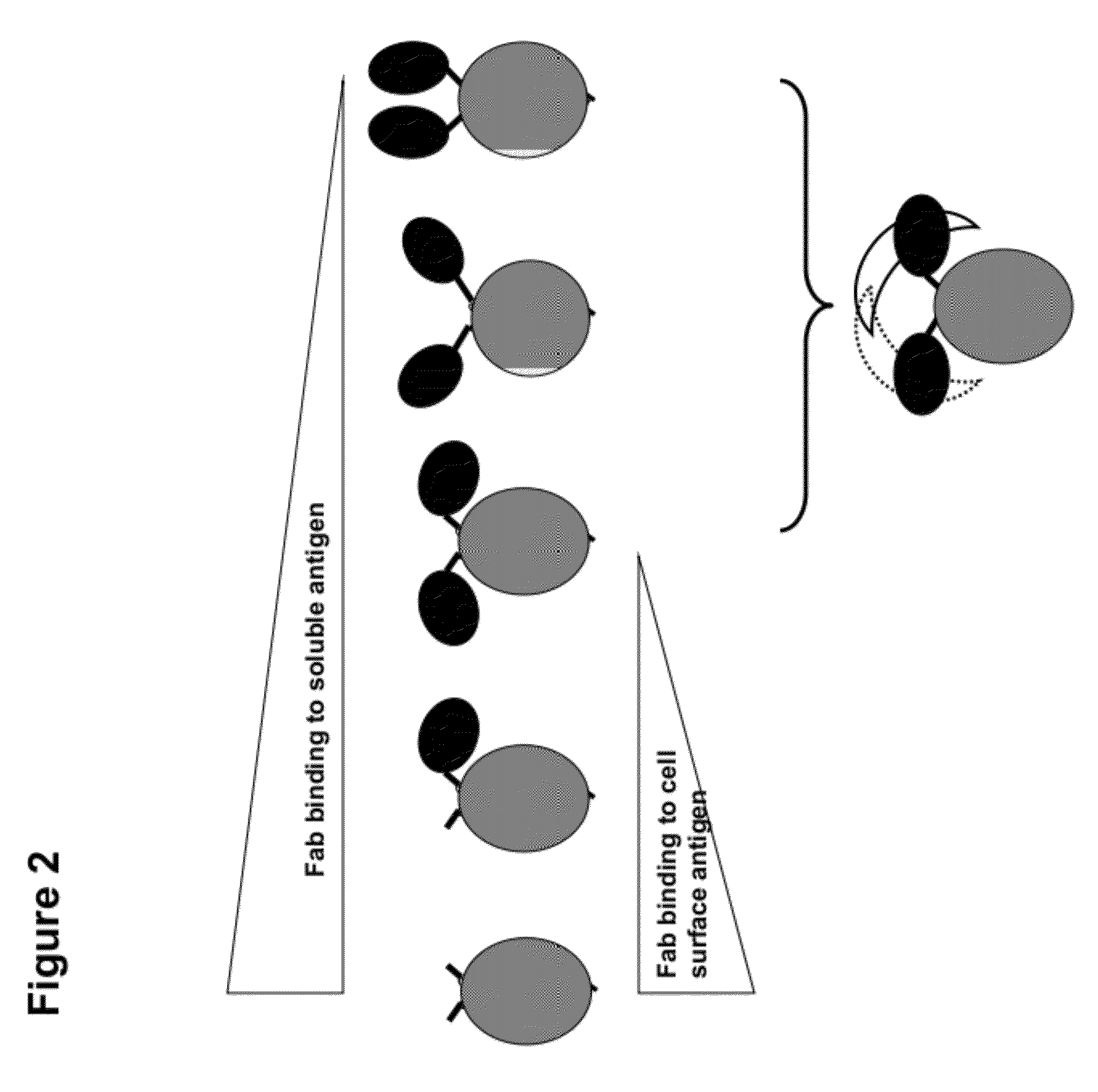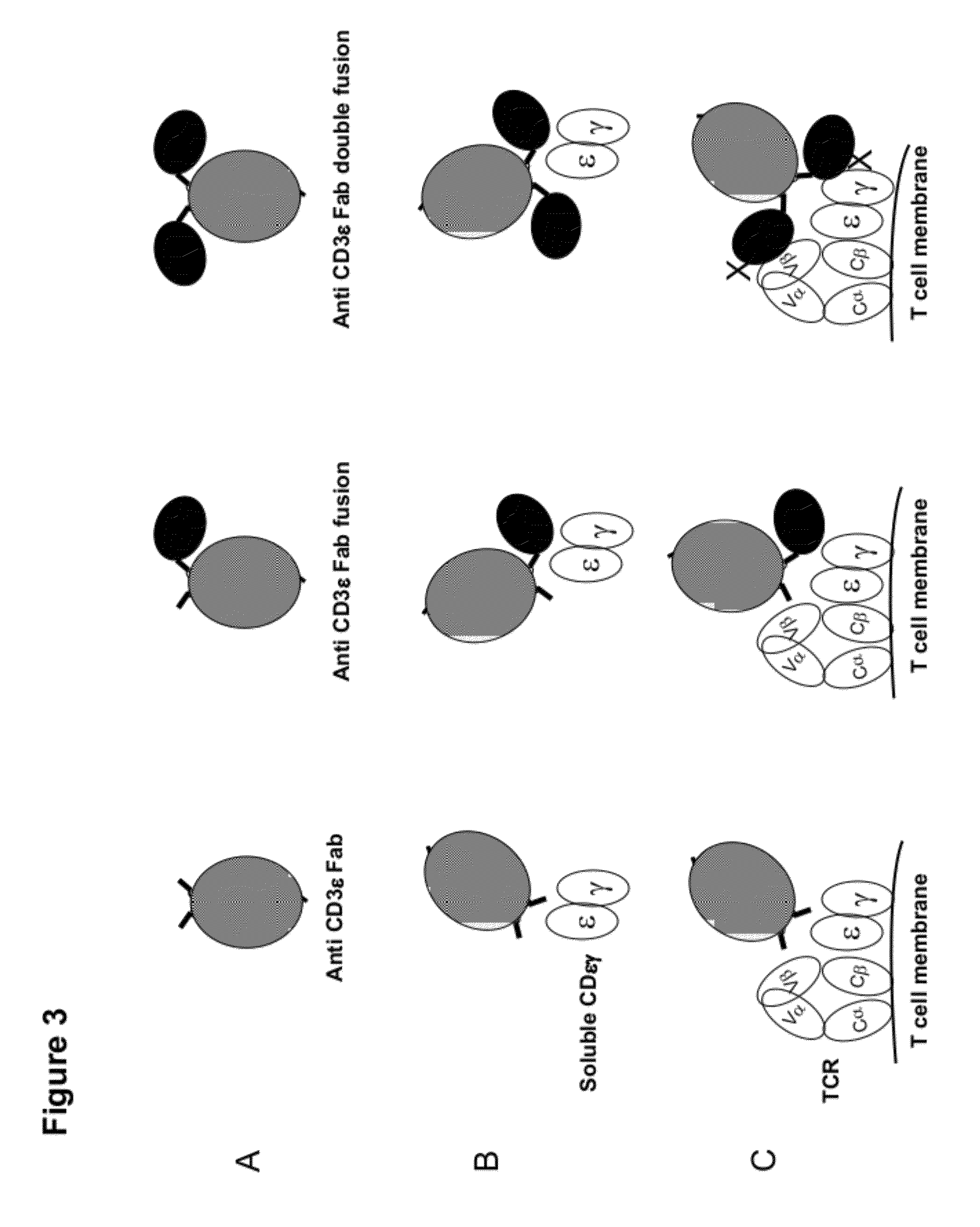Multi-specific fab fusion proteins and methods of use
a technology of fab fusion and proteins, applied in the field of multi-specific fab fusion proteins, can solve the problems of poor manufacturability, low overall response rate of cancer patients, and inability to effectively activate cytotoxic t cells directly by anti-tumor antibodies
- Summary
- Abstract
- Description
- Claims
- Application Information
AI Technical Summary
Benefits of technology
Problems solved by technology
Method used
Image
Examples
example 1
Generation of Humanized Anti-CD3 Antibodies
[0323]The heavy and light chain antibody genes were cloned from an established anti-CD3 hybridoma by steps 1) isolation of total RNA from hybridoma cells, 2) reverse transcription (RT) of the hybridoma total RNA and 3) PCR amplification of HC and LC using specific antibody gene primers. RT PCR was performed using M-muLV reverse transcriptase (New England Biolabs) with oligo-dT16 primer for 2 hrs at 37° C. The antibody heavy chain and light chain genes were PCR amplified from the oligo-dT16 primed first strand cDNA using primer pairs of HC5′: GAG ACA GAATTC GCCACC ATG GTG TTG GGG CTG AAG TG (SEQ ID NO: 103), HC3′: GAG ACA GCGGCCGC CTA TTT ACC AGG GGA GCG AGA C (SEQ ID NO: 104) and LC5′: GAG ACA GAATTC GCCACC ATG GCC TGG ATT TCA CTT ATA C (SEQ ID NO: 105), LC3′: GAG ACA GCGGCCGC TCA GGA ACA GTC AGC ACG GGA C (SEQ ID NO: 106). The 5′ primers were designed to anneal to the antibody secretion signal and the 3′ primers were designed to anneal to ...
example 2
Tumor Antigen EpCAM Protein Generation
[0327]The genes corresponding to the extracellular domain of human and cynomolgus EpCAM (epithelial cell adhesion molecules) was PCR amplified from human and monkey cDNA libraries using primers with restriction sites (SEQ ID NO: 107: N-term primer: GCGTAT CCATGG ATG GCG CCC CCG CAG GTC, SEQ ID NO: 108: C-term primer: GCGTAT GCGGCCGC TTT TAG ACC CTG CAT TGA G) with Phusion polymerase (New England Biolabs) (98° C., 1 min; 30 cycles of 98° C. for 15 s, 50° C. for 20 s and 72° C. for 20 s; 72° C., 5 min). Cleaned PCR products (Fermentas life sciences) were restriction digested (NcoI and NotI) and cloned into the N-terminus of a human Fc gene in a pcDNA3.3 vector. Human EpCAM ECD and full-length polynucleotide sequences are provided in SEQ ID NOs: 1 and 5; encoding the amino acid sequences provided in SEQ ID NOs: 2 and 6. Cynomolgus EpCAM ECD and full-length polynucleotide sequences are provided in SEQ ID NOs: 3 and 7; encoding the amino acid sequenc...
example 3
Generation of Anti-EpCAM Antibodies Using Human scFv Phage Display
[0328]General protocols are referenced in Phage display technology—a laboratory manual (Eds Carlos F. Barbas III; Dennis R. Burton; Jamie K. Scott; Gregg J. Silverman, 2001 Cold Spring Harbor Laboratory Press). A naïve human scFv phage display library was used for isolation of EpCAM specific antibodies (Viva Biotech, Shanghai, China). The following steps were employed for round 1 phage selection: 1) 50 ul of human naïve ScFv library was blocked with 500 ul 3% non-fat dry milk / PBS (MPBS); 2) Incubate milk blocked phage with immunotube pre coated with 5 ug / ml Fc for 30 minutes at room temperature, repeated 2 times; 3) add Fc protein to the above depleted phage at the final concentration of 500 ug / ml and incubated at room temperature to further capture phage displaying anti-Fc ScFv; 4) incubate the above phage solution with huEpCAM.Fc coated immuno-tube (coated with a 5 ug / ml conc and blocked with MPBS) at room temperatu...
PUM
| Property | Measurement | Unit |
|---|---|---|
| concentration | aaaaa | aaaaa |
| equilibrium dissociation constant | aaaaa | aaaaa |
| equilibrium dissociation constant | aaaaa | aaaaa |
Abstract
Description
Claims
Application Information
 Login to View More
Login to View More - R&D
- Intellectual Property
- Life Sciences
- Materials
- Tech Scout
- Unparalleled Data Quality
- Higher Quality Content
- 60% Fewer Hallucinations
Browse by: Latest US Patents, China's latest patents, Technical Efficacy Thesaurus, Application Domain, Technology Topic, Popular Technical Reports.
© 2025 PatSnap. All rights reserved.Legal|Privacy policy|Modern Slavery Act Transparency Statement|Sitemap|About US| Contact US: help@patsnap.com



